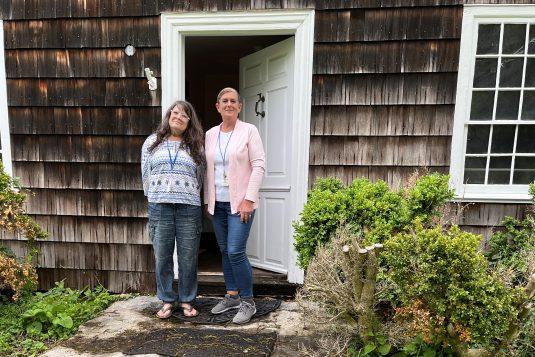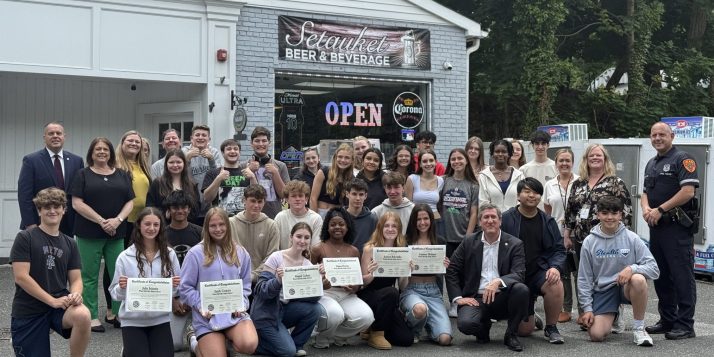By Beverly C. Tyler
Along Old Post Road in East Setauket are a number of old farmhouses. One of the most interesting and best preserved is the circa 1730 Sherwood-Jayne House which is owned by Preservation Long Island. The home, first built by Matthias Jayne, and owned by a succession of his descendants, was enlarged over the years, but it retains much of its original appearance both inside and out. The house sits on a large area that retains a farm-like atmosphere with a colonial barn, ice house and a number of other structures. A carefully pruned apple orchard stands just to the west of the house along Old Post Road. To the left of the barn and behind the orchard is the entrance to the walking trail. The three-mile circular trail meanders through the wooded area where red-tailed hawks are known to nest. However, the trail is a bit difficult to follow as trail markers were not evident to me on opening day.
A guided tour of the historic house is not to be missed. On May 31st, I was met at the front door by guides Kitty and Jill who described the house and grounds as a “central Long Island farmscape.” Matthias’ son William doubled the size of the house following the end of the Revolutionary War. Known locally as “Big Bill the Tory,” William, who lost his wife Tabitha in 1785, was responsible for the architectural details which provide a unifying appearance to the colonial structure.
The Sherwood-Jayne farm is a part of the Town of Brookhaven’s East Setauket Historic District, one of five historic districts in the Three Village area. The farm represents the character of the historic district with its many private historic farmhouses, dating from the end of the 17th century through the early years of the 20th century.
The interior of the house features both original wall paintings and spectacular paneling. The paneling is believed to be from a nearby colonial house that was the birthplace of Benjamin Tallmadge, leader of the Culper spy ring. Howard Sherwood, who purchased the house in 1908 from the third great-granddaughter of Matthias Jayne, collected the paneling and the interior furnishings.
As detailed by Preservation Long Island, “Howard Sherwood, an American decorative arts collector and Preservation Long Island founder…is responsible for the building’s current appearance as a restored colonial-era farmhouse with early twentieth-century Colonial Revival alterations…” One of the interesting records kept by Sherwood is a “Sheep Register” which details his project to use sheep on the farm. He wrote, “Along in the summer of 1932, Charlie and I bethought ourselves of sheep as a means of keeping the East field down and in shape. Accordingly, the following fall and winter, Charlie cut and set the posts to fence it and in April ‘33 I secured the necessary wire fencing, together with a stretcher to stretch it and staples to fasten it…”
A small spiral-bound copy of his register is available for visitors to see during the house tour. Neither sheep nor any other farm animals are currently housed on the Sherwood-Jayne farm, however the tour of the two floors of the house has many surprises including wide pine floorboards salvaged from Bridgehampton’s “Old Wick’s Tavern; A beautiful pine corner cupboard from a center-hall house north of Syracuse, NY; historic coverlets; period floor covering reproductions and much more.
Preservation Long Island offers Saturday tours of the Sherwood-Jayne Farm House (c. 1730), 55 Old Post Road, Setauket at 11 a.m., noon, 1 p.m. and 2 p.m. through Oct. 11. Tickets are $10 adults, $5 ages 10 to 18, free for children ages 9 and under. To reserve your spot, visit www.preservationlongisland.org/tours/.
Beverly Tyler is Three Village Historical Society historian and author of books available from the Three Village Historical Society, 93 North Country Rd., Setauket, NY 11733. Tel: 631-751-3730. www.TVHS.org





























